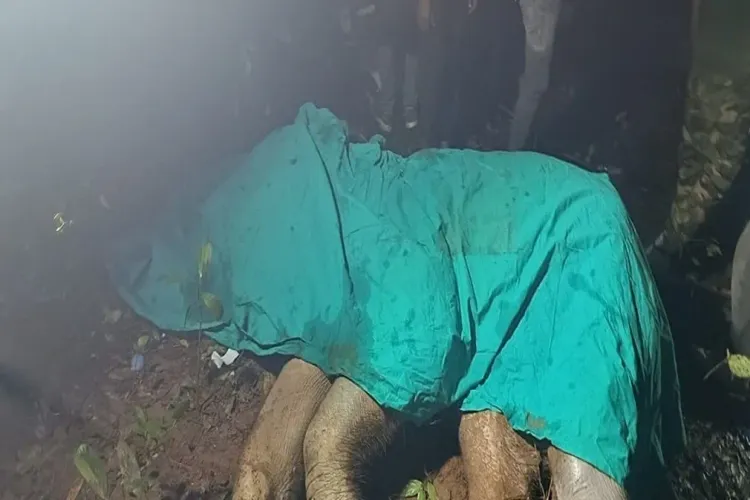How Did a Maoist Landmine Lead to the Death of a Young Elephant?

Synopsis
Key Takeaways
- Landmines pose significant threats to wildlife in conflict zones.
- The tragic death of Gadru highlights the urgent need for wildlife protection.
- Collaboration between forest officials and specialized rescue teams is crucial for animal welfare.
- Ongoing conflict adversely affects both communities and wildlife.
- Increased surveillance in affected areas may help mitigate risks.
Chaibasa (Jharkhand), July 6 (NationPress) An explosive device laid by Maoists in the lush Saranda forest of Jharkhand's West Singhbhum district has tragically resulted in the death of a young male elephant, according to officials from the Forest Department. The six-year-old elephant, affectionately named 'Gadru' by local residents, suffered serious injuries after stepping on an IED in the Digha region of the Saranda forest on June 24.
The forceful blast inflicted significant damage to the animal’s hind left leg, rendering it unable to move and causing profuse bleeding. Locals later discovered the injured elephant collapsed near a stream.
Upon receiving the alarm from villagers, forest officials employed drone surveillance to track down the elephant.
Rescue efforts commenced promptly, with forest personnel meticulously observing the animal’s condition for several days.
A specialized veterinary team from a wildlife rescue organization in Gujarat, Vantara, was called in by the Forest Department, arriving in Saranda on Saturday.
The team sedated the elephant and transported it to Jhariakela for medical care late Saturday evening. Despite continuous medical attention, Gadru succumbed to its injuries on Sunday, officials confirmed.
Veterinarians indicated that a severe infection had rendered recovery unattainable.
The demise of Gadru has left the communities of Saranda and surrounding areas in mourning, where the young elephant was a well-known presence.
The Saranda forest is recognized as one of the most heavily affected areas by Maoist activities in Jharkhand. Security forces have consistently warned that Maoist insurgents have laid landmines to target police and paramilitary units, while innocent civilians and wildlife often become unintended victims.
In the past two years, IED explosions in the region have claimed the lives of 14 civilians and five security personnel. Although wildlife casualties receive less attention, they are becoming more frequent, alarming conservationists.
Wildlife officials are now strategizing to enhance monitoring and coordination in conflict-prone areas to avert such incidents in the future.









